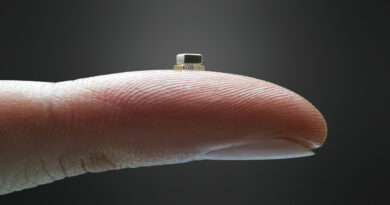Do Biometrics Have an Impact On Modern Marketing?
Biometrics are currently a topical issue for many reasons. More technologies are shifting towards reliance on biometric identification, which matches unique biological features, like facial appearance, eye retina scans, and thumbprints to identify individuals. While the use of biometrics generally has some privacy issues, the use of biometrics in marketing doesn’t involve the collection of personal bio-markers for identification.
Biometrics in marketing helps understand how prospects and customers react to specific stimuli, ideas, and experiences. Most digital marketing strategies rely on identifying the right target audience. For instance, email marketing requires that you create an accurate email list or buy email list from marketing experts. Similarly, biometrics helps businesses target the right audience using science.
Using Biometrics in Market Research
Biometrics helps market research in many ways. For instance, eye tracking helps marketers understand how customers’ eyes scan physical spaces, phones, or websites. Tracking the eye gives insights into where the user’s eyes are most drawn to. With this, marketers can design follow-up questions that help them understand why users’ eyes gravitate toward specific areas. Such information is overly useful for UX design.
Biometric metrics gathered from physiological measurements, such as heart rate and galvanic skin response, are also crucial for market research. Galvanic skin response uses sensors that detect the tiniest change in sweat gland activity. Change in sweat gland activity is directly related to emotions. When paired with heart rate metrics, this data helps understand how ideas, settings, questions, and design affect individuals emotionally.
If you are researching how people perceive website layouts, shopping experiences, or any other topic, GSR metrics can be used to guide qualitative questions.
How Biometrics Affect Marketing
Biometrics shape the future of marketing in the following ways:
-
It Helps Create Viral Content
Using biometrics to collect customer data helps marketers understand how prospects react toward verbal, visual, acoustic, and other external stimuli. This helps marketers understand customer emotions without necessarily asking them. Gathering such data provides unmatched opportunities for creating viral content that suits customer preferences and behavioral patterns.
-
Improves Customer Targeting
Customer targeting strategy determines the success of digital marketing strategies. Gathering more information about customers makes it easy for brands to respond to individual needs. The ability to gauge customers’ immediate emotional reactions allows brands to adjust their marketing strategy and offerings based on target customers’ emotional states.
-
It Helps Capture Customer Attention
Biometric data provide key customer insights and behavioral patterns, which are vital for brands designing a marketing strategy. Identifying what appeals to your potential customers makes it easy to design content that catches their attention within seconds. This increases your return on investments, leads, and conversions.
-
Improves Customer Experience
Analyzing biometric data helps brands improve customer experience through personalization. If you are marketing the same products to different people, chances are what prompts a 25-year-old app developer to click your CTAs doesn’t suit a 55-years old teacher or retired military personnel. However, biometric data allows brands to design unique marketing strategies and personalize customer experiences.
Endnote
Biometric data is certainly beneficial for market research and many other sectors. However, before using biometrics in your market study, ensure that understanding emotional responses and other biometric data directly affects your product design and market campaigns.











